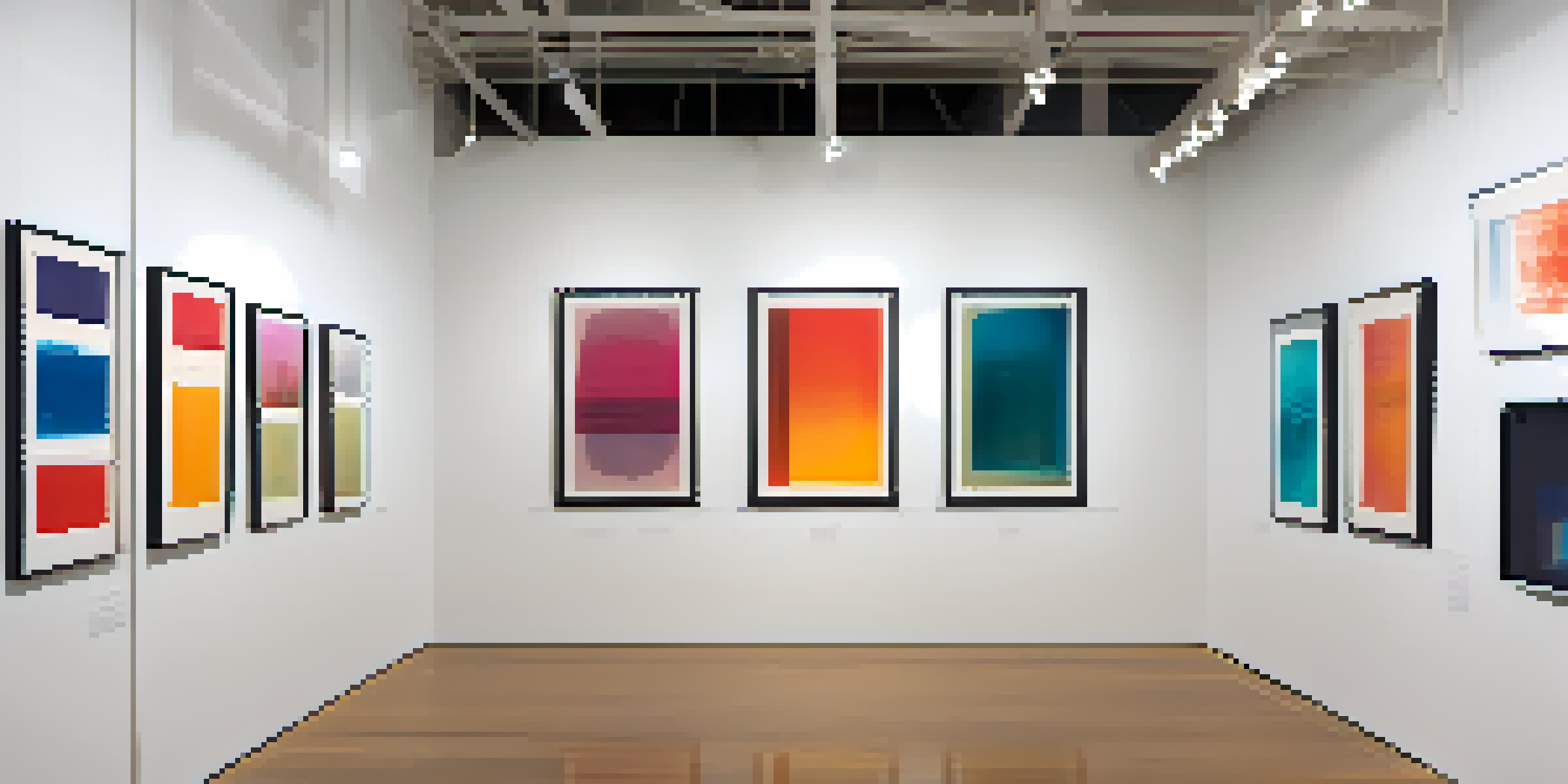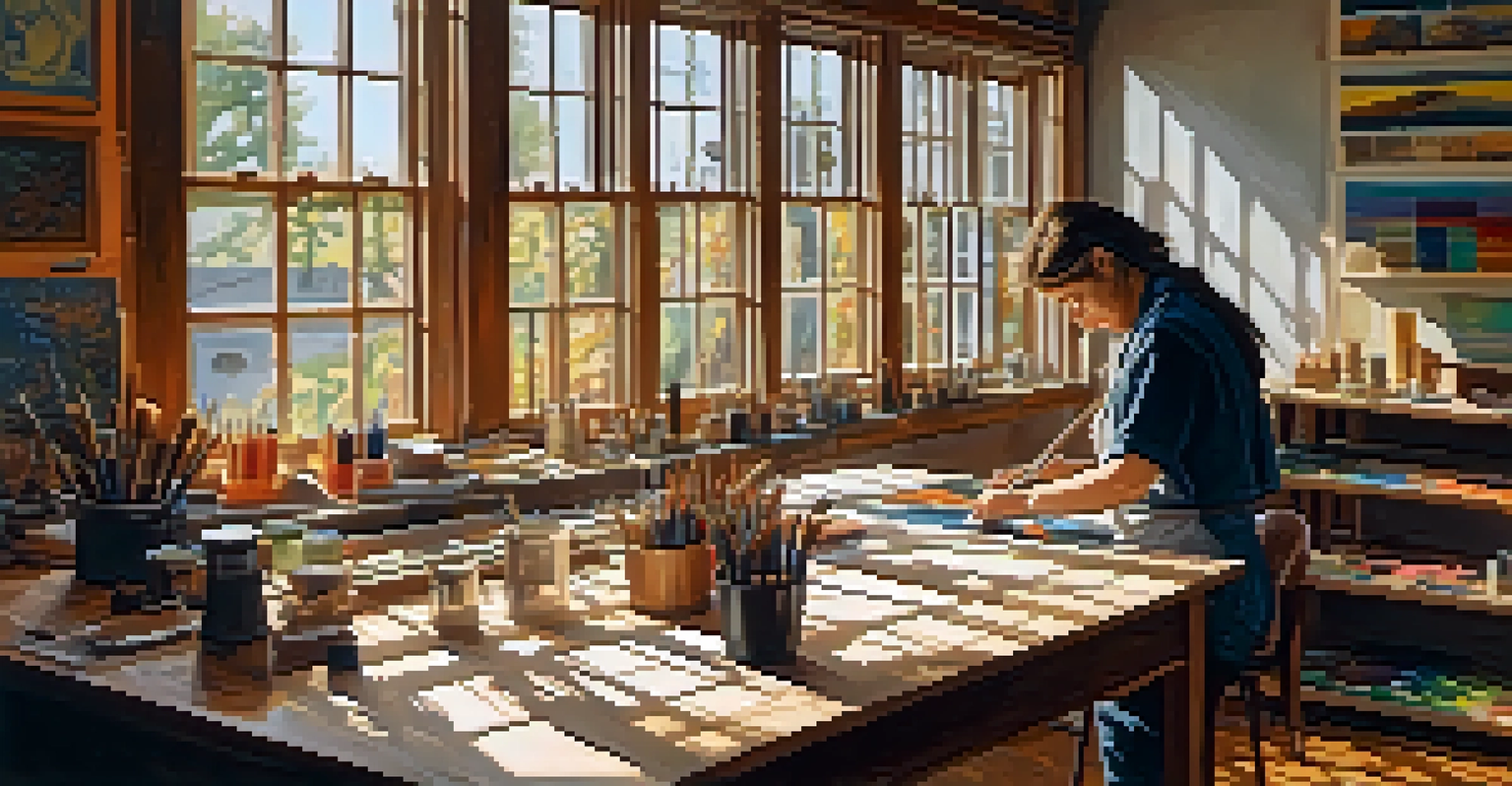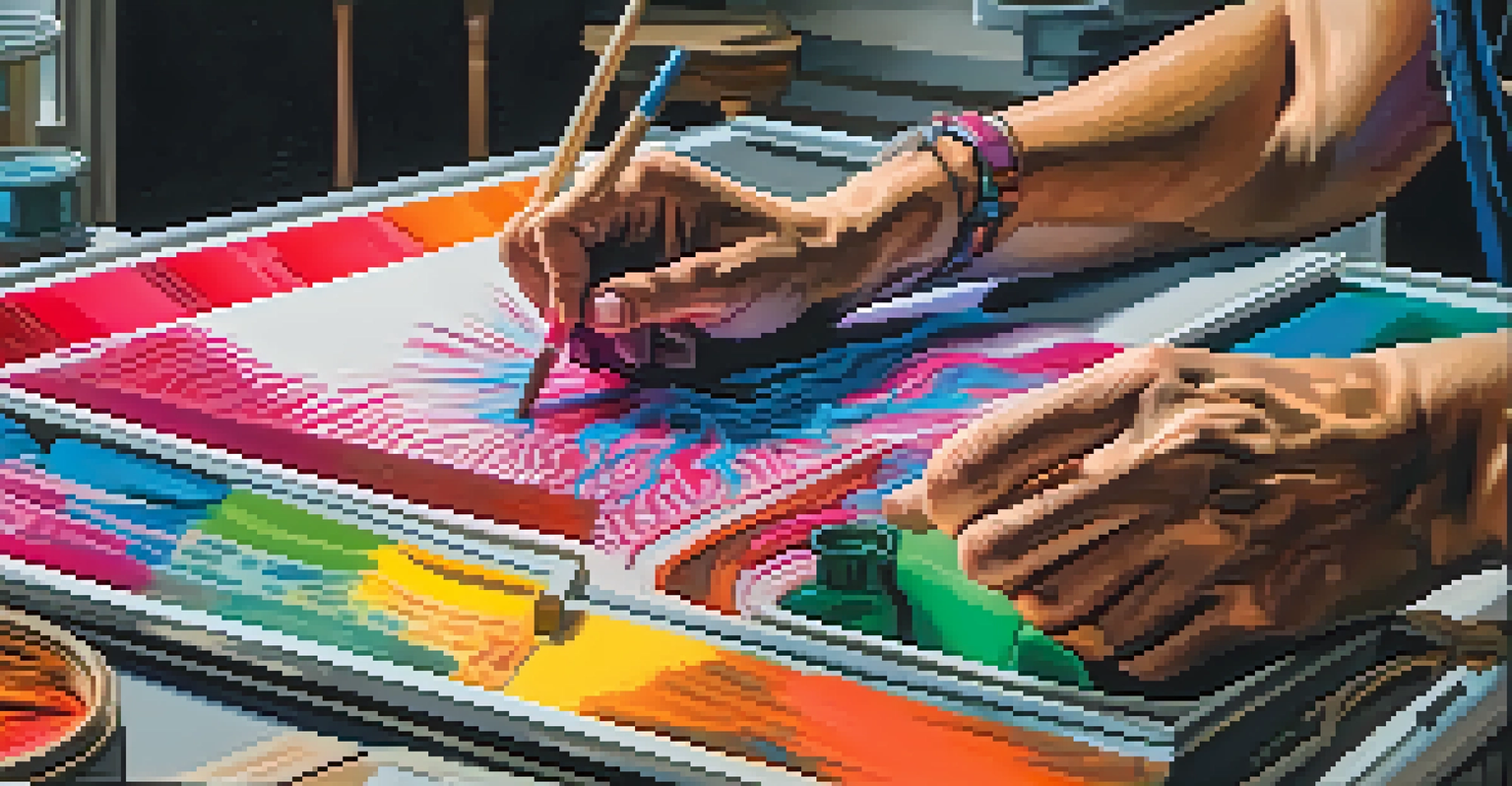Understanding Printmaking: Techniques from Relief to Etching

What is Printmaking? An Overview of Its Rich History
Printmaking is a fascinating art form that has been around for centuries. It involves creating artworks by transferring ink from a matrix onto another surface, commonly paper. This technique allows artists to reproduce images and share their creations widely, making art more accessible.
Printmaking is a wonderful way to express oneself, blending traditional techniques with contemporary ideas.
The history of printmaking dates back to ancient China, where woodblock printing was first developed. Over time, various cultures adopted and adapted printmaking techniques, leading to a variety of styles and methods that we see today. Understanding this history enriches our appreciation of the art form.
Related Resource
Today, printmaking is not just a means of reproduction but also a respected medium in contemporary art. Artists experiment with traditional methods while infusing personal styles, creating unique and thought-provoking pieces that resonate with audiences.
The Basics of Relief Printmaking: What You Need to Know
Relief printmaking is one of the oldest methods, where artists carve into a surface, usually wood or linoleum, to create a raised image. The areas that are carved away do not receive ink, while the raised portions are inked and pressed onto paper, producing a striking image.

This technique is known for its bold lines and textures, making it a favorite among many artists. A well-known example is Japanese ukiyo-e prints, which showcase intricate designs and storytelling through vibrant colors and patterns. Relief printing often invites creativity, allowing artists to experiment with various materials.
Printmaking's Rich History
Printmaking has evolved from ancient techniques like woodblock printing in China to contemporary methods that blend tradition and innovation.
For beginners, relief printmaking can be an engaging way to start exploring the art form. It's relatively accessible, with minimal tools needed, making it a great entry point for those interested in creating their own prints at home.
Exploring Intaglio Printmaking: A Deeper Dive
Intaglio printmaking differs from relief techniques as the image is incised into a surface, typically metal plates. Artists use tools like burins and etching needles to create detailed designs. Once the lines are cut, ink is applied, filling the incisions before the surface is wiped clean.
Art is not what you see, but what you make others see.
When paper is pressed against the inked plate, the image transfers, resulting in fine details and rich textures. This method is favored by artists who seek precision and depth in their work. For instance, the stunning prints of Rembrandt exemplify the beauty achievable through intaglio techniques.
Related Resource
While intaglio can be more complex and requires specialized equipment, its potential for detailed imagery makes it a captivating option for experienced printmakers. Artists often find joy in the meticulous process of creating unique, one-of-a-kind prints.
Understanding Lithography: A Unique Stone-Based Technique
Lithography is a fascinating printmaking method that relies on the chemical properties of oil and water. Artists draw on a flat stone or metal plate with a greasy medium, which allows for a range of expressive lines and textures. The plate is then treated with a solution that prevents ink from sticking to non-drawn areas.
Once the plate is prepared, it can be inked and pressed onto paper, producing detailed prints that often resemble drawings or paintings. This technique offers artists the flexibility to work with various styles, making it a popular choice for those who enjoy a more free-flowing approach.
Diverse Printmaking Techniques
Techniques such as relief, intaglio, lithography, monotype, and screen printing each offer unique ways for artists to express their creativity.
Lithography's origins trace back to the late 18th century, and it has since evolved into a beloved medium among contemporary artists. Its emphasis on spontaneity and experimentation continues to inspire creativity in printmaking today.
Monotype: The Art of One-of-a-Kind Prints
Monotype is a unique printmaking technique that results in one-off prints, making it distinct from other methods that allow for multiple reproductions. In monotype, artists paint or ink directly onto a smooth surface, such as glass or metal, and then transfer the image onto paper through pressure.
This technique encourages spontaneity and experimentation, as each print can be different, even when starting with the same design. Many artists appreciate the freedom monotype offers, allowing them to explore color and form in playful ways.
Related Resource
Famous artists like Edgar Degas and Paul Gauguin have embraced monotype in their practices, producing exquisite works that showcase the beauty of this method. Its emphasis on individuality makes monotype a captivating option for both beginners and seasoned printmakers.
Screen Printing: Blending Art with Commercial Techniques
Screen printing, also known as serigraphy, is a versatile technique that uses a stencil and a mesh screen to create images. Ink is pushed through the screen onto the substrate, allowing for vibrant colors and bold designs. This method has become increasingly popular in both art and commercial industries.
Artists often utilize screen printing to produce posters, apparel, and fine art prints, showcasing the technique's adaptability. The process allows for layering, so artists can create intricate designs with multiple colors and textures. It’s a fantastic way to explore creative expression.
Getting Started with Printmaking
Beginners can easily dive into printmaking by choosing a technique that resonates with them and embracing the creative process through experimentation.
The roots of screen printing can be traced back to ancient China, but it gained popularity in the 20th century with artists like Andy Warhol, who famously used the technique for his iconic pop art. Today, screen printing continues to evolve, inspiring a new generation of artists.
Exploring Contemporary Printmaking: Innovation and Tradition
Contemporary printmaking has expanded beyond traditional methods, incorporating new technologies and materials. Artists today often blend techniques, experimenting with digital printing, mixed media, and even installations. This innovation breathes new life into the art form, pushing the boundaries of what printmaking can be.
The fusion of traditional and modern practices allows artists to explore complex themes and concepts. For example, digital printmaking enables artists to create intricate designs that can be reproduced on various surfaces, from textiles to ceramics. This versatility offers endless possibilities for creative exploration.

In this ever-evolving landscape, printmakers continue to honor traditional techniques while embracing new advancements. This dynamic interplay between history and innovation ensures that printmaking remains a vital and exciting medium in the art world.
Getting Started with Printmaking: Tips for Beginners
If you're intrigued by printmaking and eager to try it out, there are a few tips to help you get started. Begin by choosing a technique that resonates with you—whether it's relief, monotype, or screen printing. Each method has its own charm and challenges, so pick one that aligns with your interests.
Investing in basic tools and materials is essential, but you don't need to break the bank. Many beginner-friendly kits are available that provide the necessary supplies to get you started. Local art stores often have workshops or classes that can further guide your journey into printmaking.
Most importantly, don't be afraid to experiment and make mistakes. Printmaking is all about exploration, so embrace the creative process and enjoy the journey. With time and practice, you'll develop your unique style and discover the joy of creating your own prints.